Research
Circumstellar Environments around Dwarf Stars
Main-Sequence Dipper Stars
In 2016, Boyajian et al. (2016) revealed one of the first main-sequence stars with erratic dimming events, stirring discussions and theories on the origins of such rare stars. Only a small number of similar systems have been identified since, leaving many open questions about their origins and if they are connected at all with the initial discovery of the Boyajian star. My Ph.D dissertation work conducts the first ever large-scale systematic search for these irregularly variable dwarf stars, analyzing extensive time-domain data to assess their occurrence and potential origins, such as planetary-scale collisions or Earth-Moon-like formation events. This work also drives the development of scalable tools for examining stellar variability across billions of stars, expanding our ability to probe diverse behavior of stellar variability phenomena.
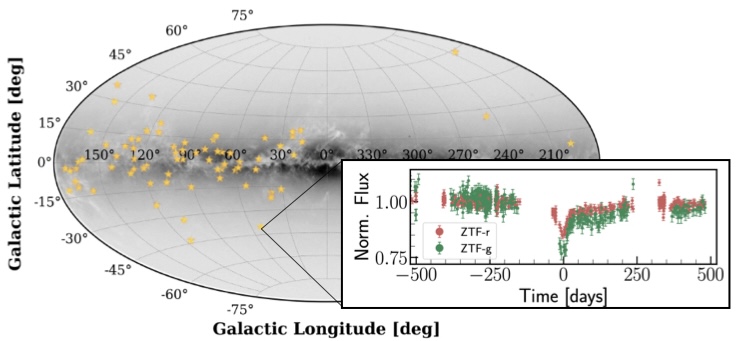
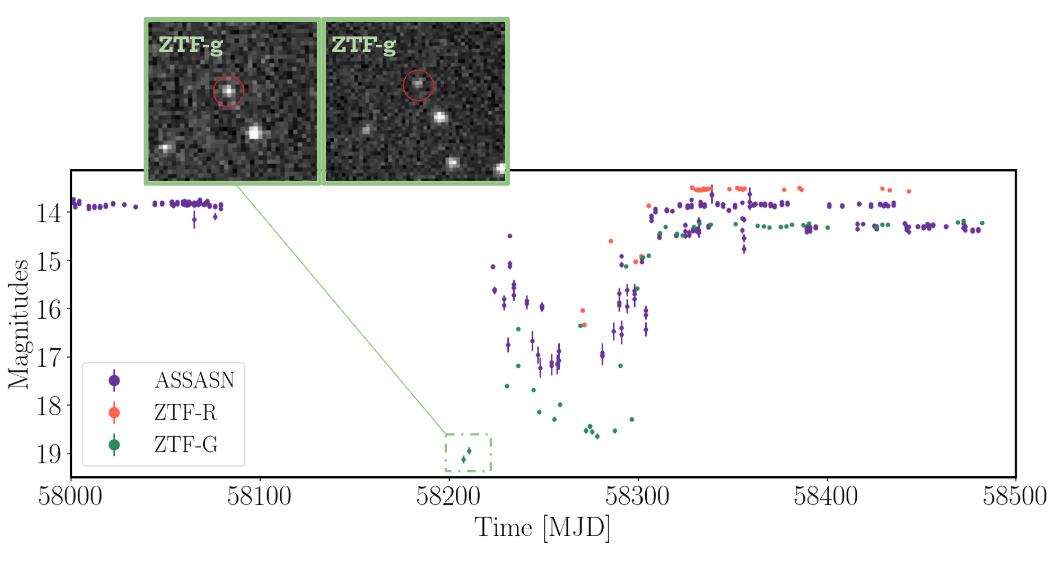
Eclipses by Large Disks
Gaia17bpp and other Disk Eclipses
We are now at the cusp of probing stellar variability on timescales spanning decades, which opens the door to uncovering new and rare types of variable stars. In my first year of graduate school, I serendipitously discovered Gaia17bpp (Tzanidakis et al. 2023), a system that we believe could be an extreme analog to the famous Epsilon Aurigae binary, and currently holds the record for the longest duration dimming event we have found. This discovery offers a unique opportunity to study eclipses caused by massive circumstellar disks, pushing the boundaries of our understanding of long-period stellar variables.


Left: Light curve mosaic of known Epsilon Aurigae analog systems including Gaia17bpp. Right: Movie from WISE revealing long-term variability.
Time-Series Features in the LSST Era
LSST Time-Series Features
In the era of large time-domain surveys with gappy, multi-band, and sparse photometric measurements, time series features have become an important tool to search for populations of variable stars and transient phenomena (Richards et al. 2011). During my first year of graduate school, I worked with Professor Eric Bellm and the UW Data Management group on transient alert processing. My interests aimed to characterize the recovery of periodic objects in data like the LSST alerts and what are the optimum techniques used to increase the efficiency of finding reliable periods. Some of my work also included characterizing alert light curve time series features and statistical properties of transients and variable stars. Our findings have been reported in the LSST Data Management Technotes-221.
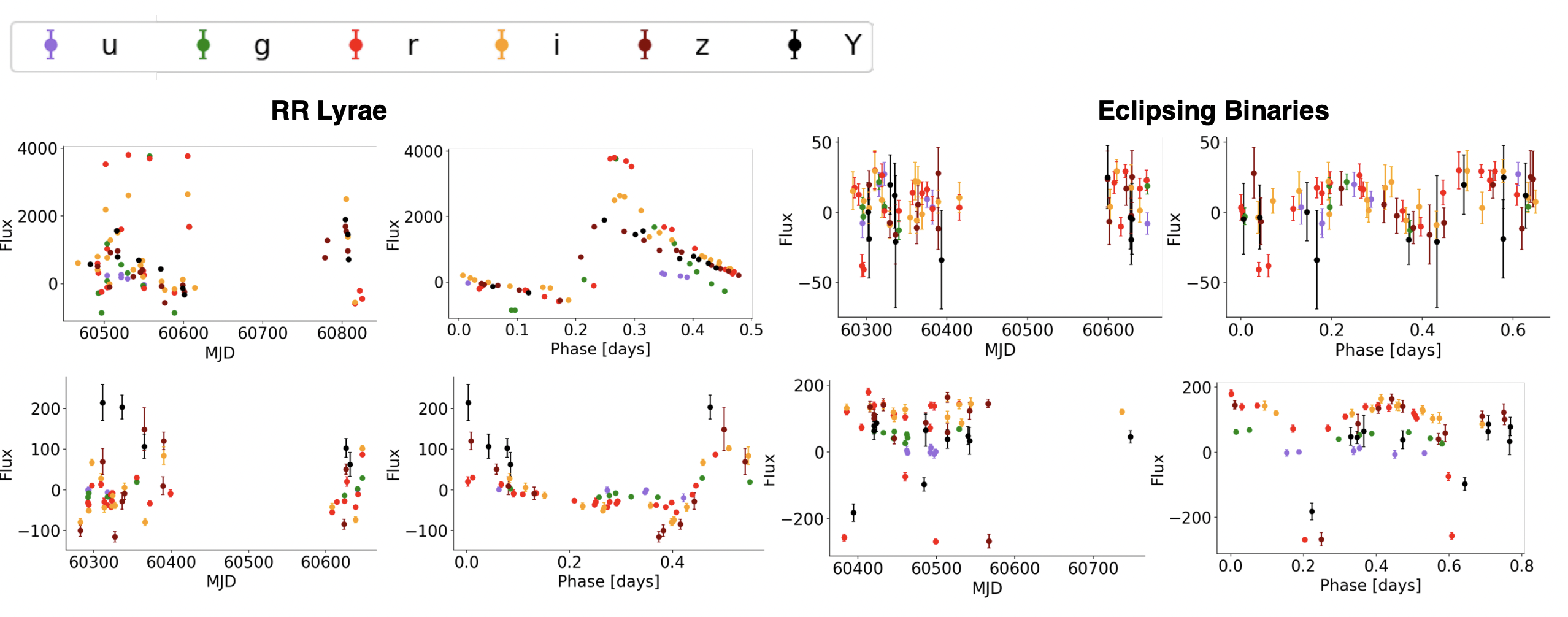
Synthetic LSST Alert-like photometry of two periodic sources: RR Lyrae and Eclipsing Binaries.
Type-II Supernovae in the Local Universe with the Zwicky Transient Facility
ZTF Census of the Local Universe (CLU) Experiment
During my post-baccalaureate research, I was fortunate to work under Professor Mansi Kasiwal, Professor Kishalay at Caltech to co-lead the Zwicky Transient Facility (ZTF) Census of the Local Universe (CLU) supernova experiment. In short, CLU aimed achieve high completeness of all known discovered supernovae by ZTF within 200 Mpc (see De et al. 2020). In parallel, I was interested in probing the luminosity function and distribution of core-collapse Type-II supernovae to better understand their origins and how their properties change as a function of host-galaxy.
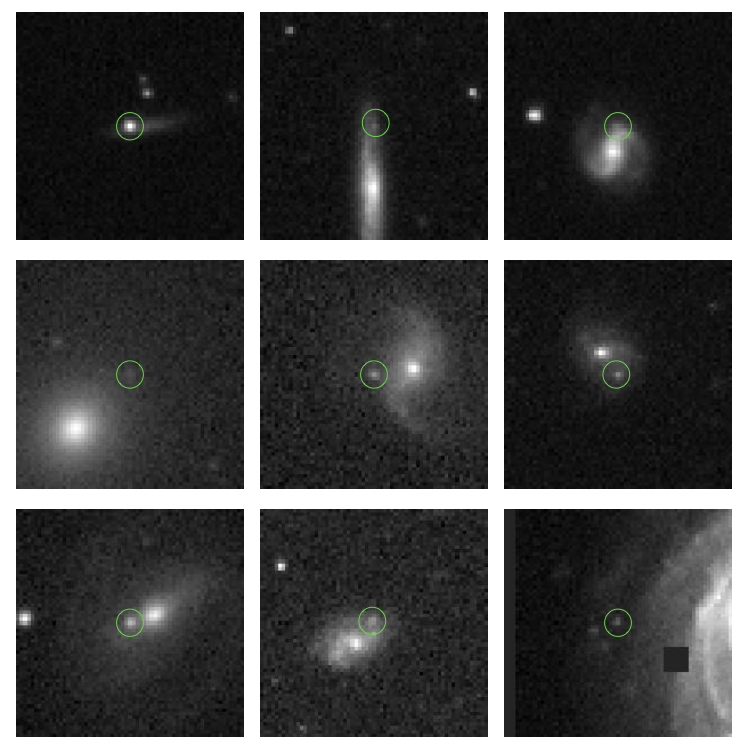
Science images of type II SNe discovered by the ZTF CLU experiment.

Modeling type II lightcurves using parametric lightcurve models.
Galactic Archeology: Tomography of the Galactic Disk
Understanding the Milky Way
During my undergraduate studies, I was extensively interested in probing the 3D distribution of stars in the Milky Way's disk under the mentorship of Professor Allyson Sheffield, Professor Kathryn Johnston, and Dr. Chervin Laporte. I was very fortunate to be part of a few studies that uncovered observational and simulated N-body models that the Galactic disk is oscillating and kicking out stars from the disk into the Galactic halo, due to past dwarf satellite galaxy interactions with the Milky Way (Laporte et al. 2018, Sheffield et al. 2018).
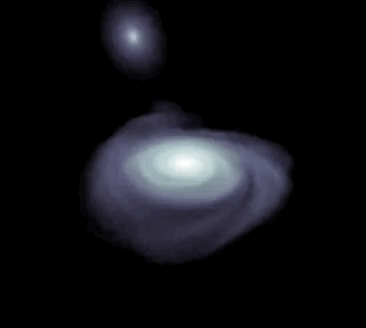
Interaction between the Milky Way and the Sagittarius dwarf satellite galaxy.

Oscillations of the Galactic disk after interaction with Sagittarius.